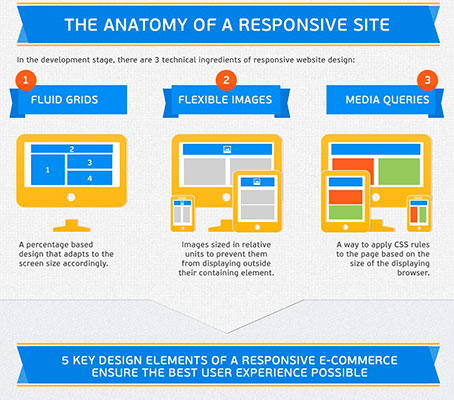If you desire your web site to function well on all gadgets, discover the fundamentals of receptive website design. Guarantee your site looks excellent on any kind of screen size. Keep mobile customers delighted and engaged. Increase your website's visibility on internet search engine. Google favors mobile-friendly web sites. Use fluid grids, adaptable photos, and media inquiries. See to it your material comes on all devices. Examine your site on various screens for the best user experience. Mastering these principles is vital for reliable responsive design. Discover even more concerning improving your internet site's use with receptive design strategies.
Significance of Responsive Web Design
Recognizing the significance of receptive website design is important in today's electronic landscape. Your internet site needs to be accessible and user-friendly across different gadgets, consisting of desktops, laptops, tablet computers, and smartphones. With the boosting use smart phones for net browsing, having a receptive design is no longer just a nice-to-have feature however a requirement.
When your site is responsive, it adapts perfectly to various display sizes and resolutions, giving an ideal watching experience for your visitors. This flexibility guarantees that your material continues to be understandable, pictures are effectively displayed, and navigation is easy to use despite the gadget being utilized. By accommodating the needs of mobile customers, you can enhance user contentment, rise interaction, and ultimately drive conversions.
In today's affordable on the internet setting, having a responsive website can additionally positively affect your online search engine positions. Online search engine like Google focus on mobile-friendly web sites, so by embracing receptive design, you not just improve the individual experience but also increase your presence and reach online.
Trick Concepts of Responsive Design
To successfully apply receptive style on your web site, concentrate on mastering the crucial principles that control its flexibility across various devices. One fundamental concept is fluid grids, which entails using family member units like percents as opposed to dealt with systems like pixels for layout design. This enables aspects to resize proportionally based on the screen dimension.
An additional essential concept is flexible pictures and media, where images and videos are sized in a manner that adjusts to the container they remain in, guaranteeing they maintain their percentages on different devices.
In browse around here , media questions play a critical duty in responsive layout by permitting you to use different styles based upon the tool's qualities, such as display width. It's necessary to prioritize material and performance to guarantee that users can access the most important info no matter the tool they're making use of.
Implementing Responsive Style Techniques
Begin by incorporating responsive style techniques into your internet site to maximize its efficiency across various tools. One effective technique is making use of fluid grids that allow elements to resize proportionally based on screen dimension. This makes sure a constant format and individual experience.
One more crucial strategy is using versatile images that can adjust to various screen sizes without losing quality or damaging the layout. By establishing best websites for portfolios -width: 100% in CSS, images will certainly scale appropriately.
Additionally, make use of media queries to use different designs based on the device's attributes, such as display width or orientation. view it helps customize the layout for certain devices or screen sizes.
Carrying out a mobile-first technique, where you prioritize creating for mobile devices prior to desktops, can likewise enhance responsiveness.
Testing your website on various devices and display sizes is vital to guarantee that the design reacts well across the board. By incorporating these receptive style techniques, you can create a web site that supplies an optimum user experience no matter the tool being made use of.
Verdict
Now that you comprehend the fundamentals of receptive web design, you can guarantee your internet site looks great on any type of tool. Bear in mind, responsive layout is like a chameleon, adapting seamlessly to its environments.
By focusing on key principles and executing methods, you can develop a straightforward and aesthetically appealing website that involves your audience properly.
Keep exercising and improving your skills to remain ahead in the ever-evolving world of website design.
